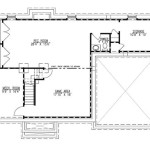American Home Shield Home Warranty Plans: A Comprehensive Overview
American Home Shield (AHS) is a prominent provider of home warranty plans in the United States. These plans offer homeowners a degree of financial protection against the unexpected costs associated with repairing or replacing covered home systems and appliances. Understanding the intricacies of AHS's plans, coverage options, and associated costs is crucial for homeowners considering this type of protection.
A home warranty is not homeowner's insurance. Homeowner's insurance typically covers damages resulting from unforeseen events like fire, theft, or natural disasters. A home warranty, conversely, is designed to cover the repair or replacement of components of covered systems and appliances due to normal wear and tear. This distinction is fundamental to understanding the value and limitations of a home warranty.
American Home Shield offers several plan options, each with varying levels of coverage and pricing structures. Homeowners must carefully evaluate their individual needs and circumstances to determine which plan best aligns with their requirements. Factors to consider include the age and condition of existing appliances and systems, the homeowner's risk tolerance for unexpected repair costs, and the budgetary constraints.
Understanding American Home Shield Plan Options
AHS provides a range of plans designed to cater to different coverage needs and budgets. These plans typically include coverage for major home systems and appliances, but the specific items covered and the associated coverage limits can vary significantly between plans.
One of the core plans is often referred to as the "ShieldSilver" plan. This plan typically focuses on covering major home systems, such as heating, plumbing, and electrical systems. It provides a foundational level of protection for the essential infrastructure of the home.
The "ShieldGold" plan usually expands upon the ShieldSilver coverage by including appliances, such as refrigerators, ovens, dishwashers, and washing machines. This plan offers more comprehensive protection for both systems and appliances.
The "ShieldPlatinum" plan generally represents the highest tier of coverage offered by AHS. It includes all the coverage provided by the ShieldGold plan, in addition to offering enhanced coverage limits and potentially covering additional items, such as roof leaks (subject to specific limitations and exclusions). Some plans may also offer coverage caps for certain appliance components or systems.
Beyond these core plans, AHS may offer add-on coverage options that allow homeowners to customize their plans to meet specific needs. These add-ons can include coverage for items such as pools, spas, well pumps, and septic systems. Adding these options will impact the overall cost of the plan.
Each plan has a pre-determined service fee, which is the amount the homeowner pays each time a service request is made. The service fee is a fixed amount, regardless of the actual cost of the repair or replacement. Choosing a plan with a lower monthly premium will usually result in a higher service fee, and vice versa. It is important to consider this trade-off when selecting a plan.
Key Policy Features and Considerations
Beyond the specific coverage offered by each plan, several key policy features and considerations are important to understand before purchasing an AHS home warranty. These include coverage limits, exclusions, the claim process, and the use of AHS's network of service providers.
Coverage limits are the maximum amounts that AHS will pay for the repair or replacement of a covered item. These limits can vary depending on the plan and the type of item being repaired or replaced. It is crucial to be aware of these limits to avoid unexpected out-of-pocket expenses. Some items may have aggregate limits, meaning that the total amount paid over the course of the policy year is capped.
Exclusions are specific items or situations that are not covered by the home warranty. Common exclusions include pre-existing conditions, cosmetic repairs, and damage caused by improper maintenance or neglect. Carefully reviewing the policy's exclusions is essential to understand the limitations of the coverage.
The claim process typically involves the homeowner contacting AHS to report a problem with a covered item. AHS will then dispatch a qualified service provider to diagnose the problem and perform the necessary repairs or replacement. The homeowner is responsible for paying the service fee at the time of service. It is important to understand the steps involved in the claim process and the required documentation.
AHS typically uses its network of pre-screened service providers to perform repairs and replacements. Homeowners generally do not have the option of choosing their own service providers unless specifically authorized by AHS. While AHS vets its service providers, the quality of service can vary. It is advisable to research and read reviews about AHS's service provider network in your area.
It is important to note that while AHS provides a network of service providers, the availability of those providers can fluctuate based on location and demand. In some areas, it may take longer to schedule a service appointment than in others. This is a factor to keep in mind, especially if you live in a rural area or an area with limited service provider options.
Cost Analysis and Value Proposition
The cost of an AHS home warranty plan consists of two primary components: the monthly premium and the service fee. The monthly premium is the amount the homeowner pays each month to maintain the coverage. The service fee is the amount the homeowner pays each time a service request is made. The total cost of the home warranty over a year can be calculated by multiplying the monthly premium by 12 and adding the total amount paid in service fees.
The value proposition of a home warranty lies in its ability to protect homeowners from unexpected expenses associated with repairing or replacing covered items. If a covered item breaks down, the homeowner is only responsible for paying the service fee, while AHS covers the remaining cost of the repair or replacement (up to the coverage limits). This can provide peace of mind and budget predictability.
To determine whether an AHS home warranty is a worthwhile investment, homeowners should carefully consider their individual circumstances and risk tolerance. Factors to consider include the age and condition of existing appliances and systems, the likelihood of breakdowns, and the potential cost of repairs or replacements. Obtaining quotes from multiple home warranty providers and comparing their coverage options and pricing is recommended.
One way to assess the potential value of an AHS home warranty is to consider the average lifespan and replacement cost of major appliances and systems. For example, if a homeowner has an aging refrigerator that is likely to need replacement in the near future, the cost of replacing the refrigerator could be significantly higher than the cost of an AHS home warranty plan. In this scenario, the home warranty could provide significant financial benefit.
However, it is also important to consider the potential for paying service fees without actually needing to use the home warranty. If a homeowner's appliances and systems are relatively new and well-maintained, the likelihood of breakdowns may be low. In this case, the cost of the monthly premiums and service fees could outweigh the potential benefits of the coverage.
Furthermore, the cost of the home warranty should be weighed against the cost of self-insuring. Self-insuring involves setting aside funds in a savings account to cover potential repair or replacement costs. This approach provides greater flexibility and control over how the funds are used, but it also requires discipline and the ability to handle unexpected expenses.
In conclusion, the decision of whether or not to purchase an AHS home warranty is a personal one that should be based on a careful evaluation of individual needs, circumstances, and risk tolerance. Understanding the plan options, coverage limits, exclusions, and cost structure is crucial for making an informed decision.
Before committing to a plan, it is advisable to thoroughly review the sample contract provided by AHS. The fine print contains important details regarding coverage limitations, claim procedures, and dispute resolution processes. Understanding these details can help avoid misunderstandings and ensure that the homeowner is fully aware of their rights and responsibilities.

Why A Home Warranty Is Beneficial For New Homeowners

Harrisonburg Housing Today

Home Shield Appliance Warranty

Home Warranty Plans By American Shield

Best Home Warranty Companies Plans Costs Coverages Faqs News Direct
Shieldplatinum Plan Ahs

What Does A Home Warranty Cover Ahs

Oneguard American Home Shield Partnership Ahs

Best Home Warranty Companies Updated Gfc Globals Field Cur Month 2024

Home Warranty Guide Free Brochure Ahs








